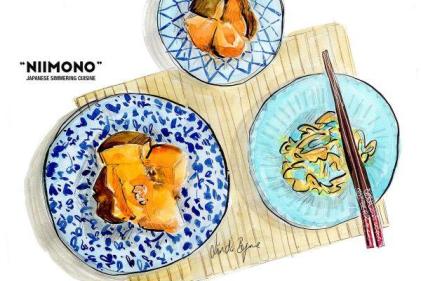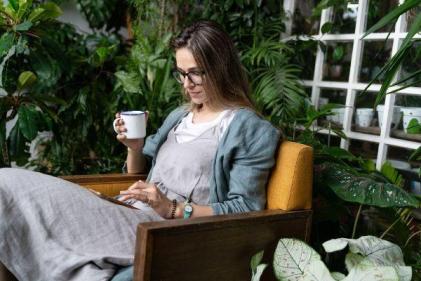There is nothing like the satisfaction derived from creating something from scratch. Sewing is one such activity that leaves you feeling both satisfied and productive. Furthermore, it is an essential life skill whether you are a teenager, working adult living alone, or a married person trying to manage your household.
If you are looking for ideas to reduce your contribution to consumerism, save money, and live a more productive life, you have come to the right place. Here are 5 super simple DIY projects to help you get started.
Why the Kind of Sewing Machine You Use Matters
Before you get all excited and head to the store to grab some sewing gear, consider which method might be the right one for you. On one hand, you have the classic thread and needle, which is much less expensive but might take longer to complete a project. There is also a greater risk of injury.
However, sewing machines achieve the same results in much less time. Plus, you won’t need fancy sewing skills, such as knowing how to backstitch or make running stitches. There are settings on the machine to help you create a variety of stitches.
As a beginner, you might face challenges in choosing a machine suited to your skill level. Check out these sewing machines for beginners to help you pick a machine to match your needs.
Top 5 DIY Sewing Projects
The following consists of instructions on how to make low-waste and more affordable versions of everyday house items.
Reusable Shopping Tote Bags
You can sew an attractive and durable shopping bag, specifically helpful if you dislike using disposable plastic alternatives. Start by:
1. Picking any patterned cotton fabric of your choosing and buying 1.5 yards and 44 inches of it. Cut out two 20-inch square pieces and two 6x20-inch rectangular pieces.
2. Making the right sides of the square fabric pieces face each other, pin them together. Then sew three sides of the fabric, leaving a seam allowance of 0.5-inch. Iron out the seams.
3. Fold the bottom corner of the side seam toward the bottom seam. Check whether both bottom and side seams are in position. Place a grid ruler near this section and mark 3.5 inches starting from the fabric’s corner to the ruler’s edge (at right angles to the seam).
4. Use pins along the marked line and sew this line. Remove the pins. Leaving a 0.5-inch space from the line, cut off the pointed corner. And repeat steps 4 to 6 for the other side. Once both sides are done, the bag’s square bottom will form.
5. For the straps, take the rectangular piece, place it with the right side face down, and fold it in half. Iron the folded piece to create a prominent line. Unfold the fabric. Fold one side of the fabric toward the line and iron it. Do the same with the other side. Fold the fabric to recreate the prominent line and iron it again. Sew the fabric piece like this, leaving a 0.125-inch seam allowance.
6. Do step 9 for the other rectangular piece.
7. Turning the bag inside out, fold about 1 inch of the top portion of the bag and iron. Use a scale and create two marks 6 inches from both edges of the bag. This is where the handles will be positioned.
8. Pin the fabric handle to the marks at the bottom of the bag’s top folded sections. Sew the handles on. Finally, insert the lining into the bag and stitch twice, first with a 0.25-inch seam and then with a 0.125-inch seam for added durability.
Reusable Coffee Cozy
Sew yourself an adorable coffee cozy so that you can enjoy your hot drink longer! Here’s how you do it:
1. Place your desired fabric on a flat surface with the wrong side facing up, take an actual coffee cozy, and trace the shape using a fabric marker.
2. When you cut your marked line, ensure that the length of the fabric on all sides is about 0.25 inches greater than your marked outline. Use this first piece as a template to cut out another piece.
3. Cut out a batting piece with the exact dimensions as the pieces you already have. Sandwich the pieces of fabric in this order: Mark the wrong side of the fabric on the inside, batting piece, the right side of the second fabric on the outside.
4. Place a thin elastic hair band between the first and second fabric pieces. Ensure that the fused end of the band is hanging out to prevent breakage from eventual wear. Secure this hair band on either side using pins. Pin the three layers of fabric together using pins spaced two inches apart. This 2-inch section will not be sewn.
5. Stitch along the marked line (except the 2-inch section). Do this twice for the section with the elastic hair band for added security. Trim off the corners of your stitched piece, and the portion of the hair band sticking out.
6. Turn the piece inside out through the unstitched 2-inch section. Press the fabric and stitch across the borders again.
7. Place your coffee cozy around your cup to determine where to position your buttons. Mark your preferred position with a pin.
8. To prevent your button from being overly rigid, place a toothpick between the fabric and the button when you are sewing it on. Use two stitches to sew the button on the cozy.
Fabric Coasters
Need an easy gift idea and have scrap fabric lying around? With the power of your sewing machine and this easy guide, you can make beautiful, budget drink coasters. We’ll show you how.
1. You will need two 5-inch square fabric pieces for the coaster, and fusible fleece.
2. Place the fleece on the wrong side of the fabric and iron.
3. Add the other piece so that both fabrics have their right sides facing each other and pin them.
4. Sew the fabric pieces together, leaving a half-inch seam allowance. Leave about two inches on the side of the coaster unstitched.
5. Pull the coaster inside out and seal the 2-inch space with fabric glue.
6. Attach your desired trimming with fabric glue.
Baby Bibs
Baby bibs provide some much-needed coverage to prevent your baby from soiling themselves and their clothes. You can whip these up in less than an hour, and they are not resource-intensive at all. Here’s how you can create them:
1. Print a template for the shape of your bib. These can be found on numerous online sites.
2. Use the template as a guide to cut out any fabric of your choosing. Then, use this fabric as a template to cut out your backing fabric.
3. Pin the fabric pieces together and stitch their edges. Always leave a 2-inch gap anywhere you prefer so that you can turn the piece inside out.
4. Turn it inside out and iron the piece to completely flatten it. Sew around the edges again.
5. Attach Velcro or snaps to help you fasten the item to your baby.
A-Line Skirts
A-line skirts are incredibly flattering on almost every figure, not to mention that putting one on will make you feel instantly more feminine. To make this stylish piece:
1. Start with tracing the outline of the front of your existing a-line skirt on a large sheet of paper.
2. Cut the drawn pattern out.
3. To create space for your zipper, the back of your skirt will be cut in two halves.
4. Transfer the templates onto fabric and cut out three sections: the front, back, and waistband.
5. Sew the front piece to the back pieces. When attaching the back pieces together, leave the top portion of the seam (length must be shorter than zipper) open for zipper placement.
6. Secure the zipper to the back of the open seam with pins. Sew them into your skirt using your machine.
Hopefully, these simple projects will entice you to pick up this wonderful habit. However, if your first attempts aren’t producing the best results, keep trying. You’ll eventually get the hang of it. Good luck!









